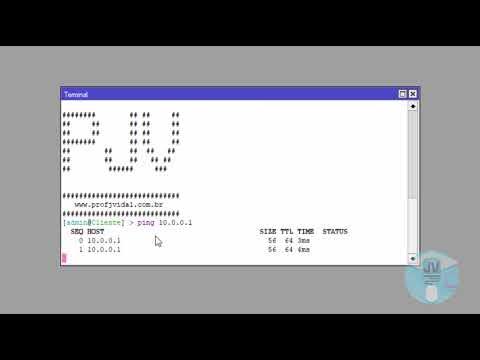Access ANY Network (remotely)
Summary
TLDRThis video demonstrates how to use TwinGate for secure, seamless access to network resources. It covers setting up resources, managing user access, and configuring policies such as device trust levels and port restrictions. The speaker also highlights practical use cases like remote support for family members and efficient device monitoring without modifying firewall settings. TwinGate’s comprehensive features make it an ideal solution for network security and remote administration.
Takeaways
- 😀 TwinGate enables secure remote access to network resources, with a focus on tight security and minimal exposure.
- 😀 The principle of least privilege is enforced by default in TwinGate, meaning no one has access unless explicitly granted.
- 😀 TwinGate allows you to grant access to network resources based on specific user groups, such as the 'everyone' group.
- 😀 Resources can be accessed securely via SSH, as demonstrated by logging into a Raspberry Pi remotely.
- 😀 Access can be restricted to specific ports, such as only allowing SSH on Port 22 for a particular resource.
- 😀 The DNS management in TwinGate allows for easy creation of aliases, enabling access to resources using simple names (e.g., 'connector.reach.rockwall.local').
- 😀 Policies can be configured to restrict access to resources based on device type, such as only allowing Mac users or enforcing device-specific security requirements (e.g., disk encryption).
- 😀 Time-based access restrictions can be set, allowing access for a limited duration (e.g., 2 hours) or automatically revoking access after a set period.
- 😀 Activity logs are available in TwinGate, showing who has accessed resources, helping with auditing and monitoring.
- 😀 Devices can be added as resources to the network, and port restrictions can be applied to ensure only the required services (e.g., HTTP, HTTPS) are accessible.
- 😀 TwinGate’s service accounts allow for headless devices or monitoring services to securely access network resources without the need to expose additional firewall ports.
Q & A
What is the default policy when creating a resource in TwinGate?
-The default policy is 'least privilege,' meaning no one has access unless explicitly granted. This ensures that resources are only accessible to those who need them.
How does TwinGate allow access to resources after creation?
-Once a resource is created, access can be granted to users or groups. In this case, the user grants access to the 'everyone' group, making the resource available to anyone in the group.
What is the purpose of port restrictions in TwinGate?
-Port restrictions allow the user to limit access to specific ports on a resource. For example, in the script, only Port 22 (SSH) was allowed, ensuring that only SSH access is permitted to the Raspberry Pi.
How does TwinGate handle DNS entries?
-TwinGate automatically creates DNS entries when resources are configured. The user demonstrated this by creating an alias for a resource, such as 'connector.reach.rockwall.local', which simplifies access and improves network management.
What is the role of the 'activity logs' feature in TwinGate?
-The activity logs feature tracks who has accessed resources, providing valuable insight into usage and security. It allows the user to monitor access attempts and generate reports to understand network activity.
How can security policies in TwinGate be customized?
-Security policies can be customized to restrict access based on factors such as device type (e.g., only Mac users), security requirements (e.g., hard drive encryption), or specific device serial numbers.
What options does TwinGate offer for managing user access to resources?
-TwinGate allows users to manage access by adding them to teams or groups, granting specific permissions, and applying rules based on devices, profiles, and even expiration times for access.
How does TwinGate's expiration and auto-lock features work?
-Expiration settings can be applied to restrict access after a specified period, while the auto-lock feature can be configured to automatically remove access after a set duration (e.g., after 30 days).
What is the significance of the Nmap scan in the script?
-The Nmap scan is used to discover devices on the network, such as printers or computers, and identify open ports. The discovered devices are then added as resources within TwinGate for easier management and access control.
How does TwinGate facilitate remote support for devices?
-TwinGate enables remote support by allowing the user to log into devices, like a Raspberry Pi, on a family member's network. This allows troubleshooting, such as fixing network issues like when a phone is mistakenly set to airplane mode.
What is the purpose of 'service accounts' in TwinGate?
-Service accounts in TwinGate allow specific applications or headless clients to access the network and resources securely. For example, a service account could be used to monitor the status of a printer via uptime monitoring tools like Uptime Kuma.
Outlines

This section is available to paid users only. Please upgrade to access this part.
Upgrade NowMindmap

This section is available to paid users only. Please upgrade to access this part.
Upgrade NowKeywords

This section is available to paid users only. Please upgrade to access this part.
Upgrade NowHighlights

This section is available to paid users only. Please upgrade to access this part.
Upgrade NowTranscripts

This section is available to paid users only. Please upgrade to access this part.
Upgrade NowBrowse More Related Video

Configuring a Management VLAN

Pembahasan Soal UKK TKJ Paket 2 Terbaru 2024/2025 Full - 2 Router Dynamic Routing ospf RB 951-2HnD

SSH Configuration on Cisco Routers and Switches using Cisco Packet Tracer

Configurações Básicas - Mikrotik RouterOS - P1

Zero Trust Explained | Real World Example

Palo Alto Training | HIP Host Information Profiles
5.0 / 5 (0 votes)